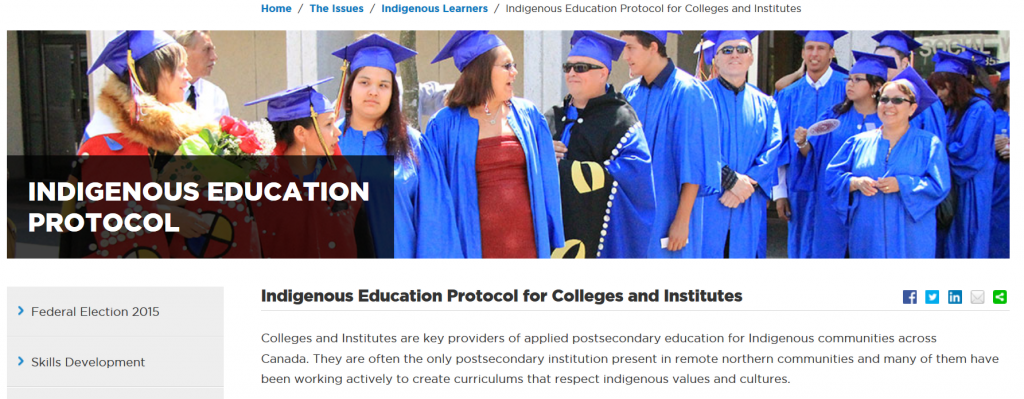 After reviewing the video with Mary Simon, I became curious about post-secondary education for Aboriginal youth, specifically those living in remote areas. I cam across the College and Institutes Canada webpage which collaborates
After reviewing the video with Mary Simon, I became curious about post-secondary education for Aboriginal youth, specifically those living in remote areas. I cam across the College and Institutes Canada webpage which collaborates
with post-secondary institutes who actively recruit and create curriculum which encompasses a holistic, aboriginal centered approach. The To be a recognized member of the Indigenous Education Protocol, institutions must agree to seven core principles: some include making indigenous education a priority, employing aboriginal people, and commit to developing an indigenous center on campus.
The purpose of this is to improve access to post-secondary education for aboriginal students as well as to ensure these students needs are met in the institution. This website is geared towards post-secondary institutions and provides supports to these institutions to ensure the learner’s needs are met.
Mary Simon made some good points about connecting the Inuit population to future Northern jobs, the Indigenous Education Protocol may be a helpful in educating Northern populations.
To view the website: http://www.collegesinstitutes.ca/the-issues/indigenous-learners/approaches-and-exemplary-practices-to-guide-implementation/indigenous-education-protocol/
Ronaye Kooperberg (Module 2 – Post 4)



